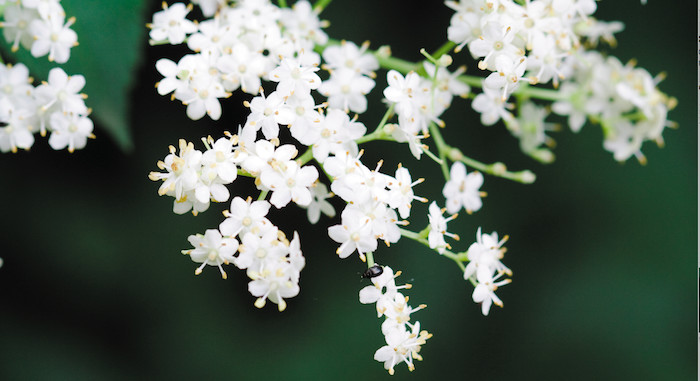
Anistatia Miller and Jared Brown have some suggestions for making more of the elderflower season.
We love history. But then, you may already know that. What makes history an obsessive form of fun is the discovery of ideas - that when you thought you knew everything about something you open another book and hit a eureka moment.
We’ve had more than a few eurekas since we made the leap from urbanites to smallholders. But a few of our best epiphanies came when we discovered a few classic recipes while we were living in southern France. We like to repeat them time and again because they are simple and low-alcohol with lots of flavour. Let us introduce you to elderflower sparkling wine.
Let’s start the year off right with a new equipment purchase: a winemaking kit (we like art-of-brewing.co.uk). A 30-litre bucket with lid, grommet and airlock; a medium, easy-start siphon; a hydrometer and thermometer; and a no-rinse steriliser such as Campden tablets are all you need. (Don’t get carried away, now, until you see if you like playing with your flowers. And if you do you can go state-of-the-art all the way.) Ready?
It’s almost elderflower season, when those lovely little blossoms burst forth with a distinctive aroma and palate that we all have learned to embrace in liqueur form. But imagine playing with a lightly effervescent liquid that packs more floral and less sugar into your recipe equation. You can opt for dried flowers if you can’t go scrumping for fresh blossoms (also available from art-of-brewing.co.uk in 100g packs).
THE METHOD
Combine five litres of spring water with 40g white wine vinegar (or the juice and zest of four lemons plus 2tbsp white wine vinegar) and 700g caster sugar in your bucket and stir the contents with a wooden spoon until the sugar is dissolved. Place 20g of dried elderflowers or 15 fresh elderflower clusters in a muslin bag or a piece of unbleached cheesecloth closed with a bit of twine and submerge the package into your liquid. Pop on the lid and airlock. Then walk away for three days. If you don’t see much bubbly action taking place in your mixture, add a packet of sparkling wine yeast and ferment for about a week. Strain your wine through muslin or cheesecloth and then bottle into sterilised clip-top Kilner bottles or glass bottles with sparkling wine stoppers. Let your bubbly ferment for another week before you chill it and enjoy.
The creativity doesn’t stop here. Try using this same basic recipe for making rose petal sparkling wine (tip: use lemons not just white wine vinegar in this delicate mix) or, even more daring, violet sparkling wine, using dried or freshly gathered wild violets (tip: violet deserves a little orange in the mix, so use only three lemons and one orange in this mixture).


